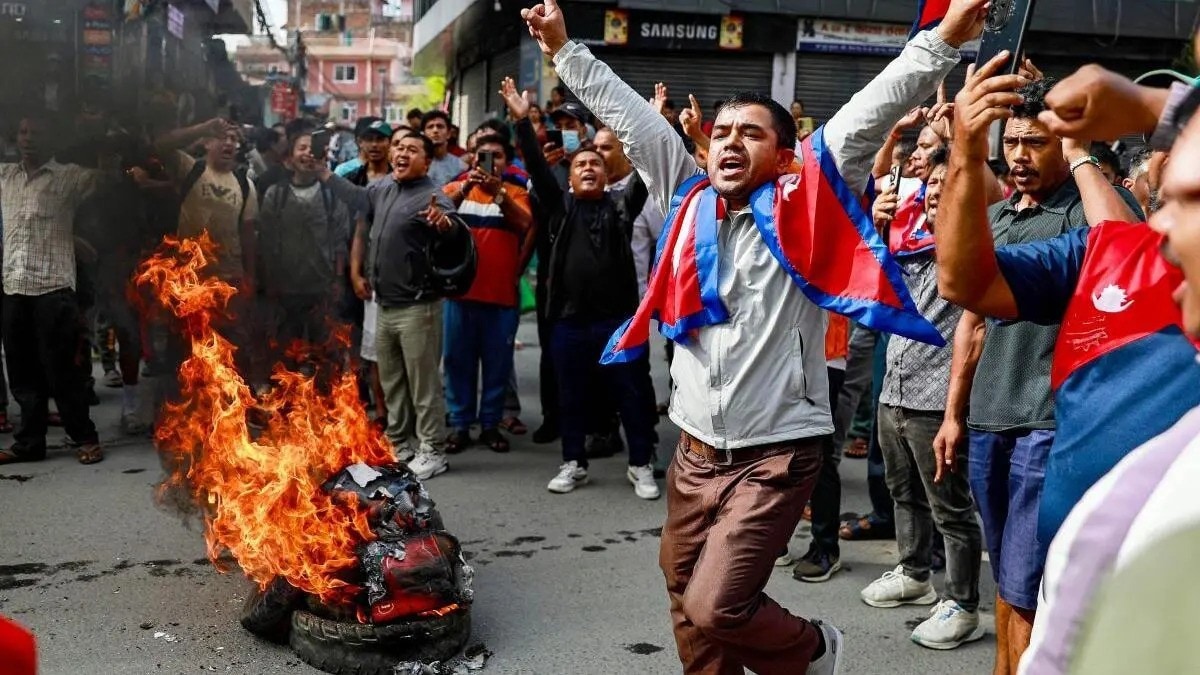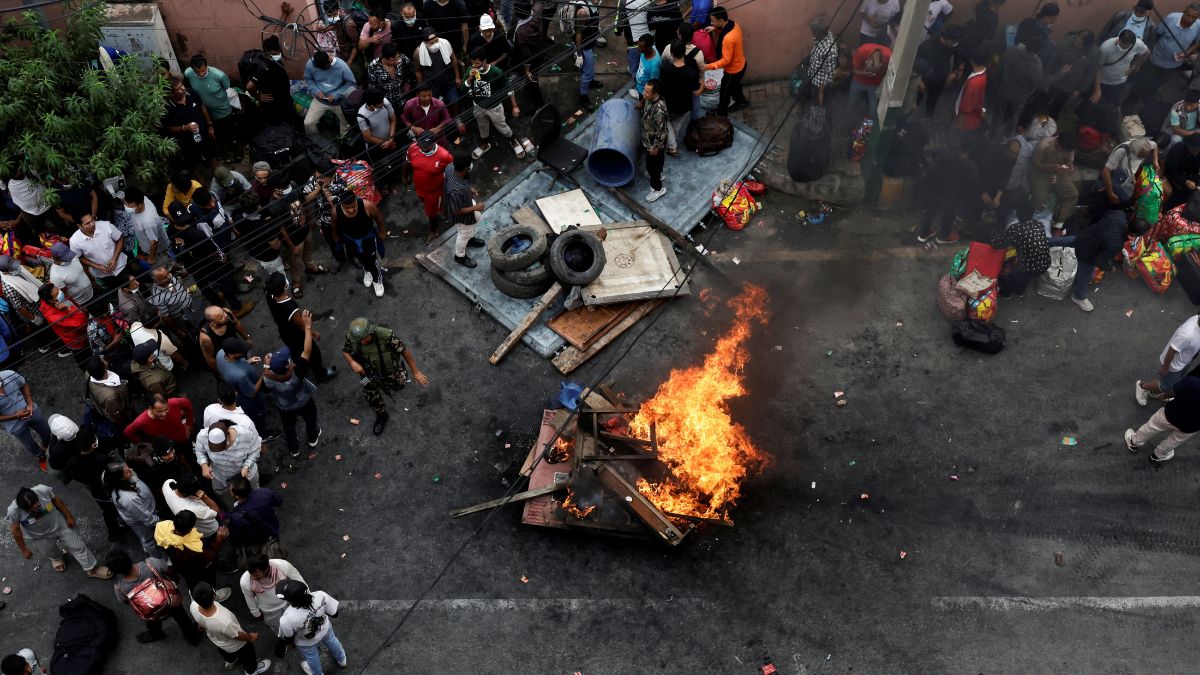The past three years have rewritten the political arithmetic of South Asia. Sri Lanka’s 2022 uprising over economic collapse, Bangladesh’s student upheaval in 2024, and now Nepal’s Gen-Z eruption all share an ugly family resemblance: youthful rage finding swift, street-related expression; symbolic triggers that suddenly matter far more than policymakers imagined; and, the frightening readiness of mobs and security forces alike to pay and mete out extreme violence. The result is not merely episodic disorder — it is cumulative instability that bleeds across borders and scars nations for a generation.
Why has anger overflowed? Partly because the so-called “youth bulge”, long hailed as a demographic dividend, too often arrives as a political and economic liability when young people lack jobs, opportunity, or a credible voice in governance. The street trend in South Asia shows frustration morphing into fury: students and young professionals in cities who see corruption, cronyism and a hollowing of institutions decide they have nothing left to lose.
That rage is amplified by immediacy — viral videos (sometimes doctored), encrypted chats and meme politics make mobilisation fast, chaotic and hard to contain. When mobs stop caring for life or property — as happened in Dhaka and has tragically recurred in Kathmandu — the state faces an excruciating choice between heavy hand and political surrender. The Army inevitably has the hard choice.
Nepal’s recent violence crystallised around a regulatory trigger. The government ordered a major social-media shutdown after platforms failed to meet a registration deadline, provoking massive protests that turned deadly; the ban was later rescinded after nationwide unrest and reportedly dozens of fatalities. In the course of the week the army has been deployed, the prime minister has resigned, and the possibility of a military authority stepping into administration — as happened in parts of Bangladesh’s recent crisis — loomed large in media accounts and official deliberations. Those facts matter because an army-run interregnum, even temporary, changes incentives and compresses political compromise.
Impact Shorts
More ShortsSome observers reach for theory to make sense of the chaos. Gene Sharp’s book, From Dictatorship to Democracy, remains the clearest modern map of how leaderless, decentralised non-violent campaigns can delegitimise governments by targeting their pillars of authority. Sharp described how strikes, symbolic acts and non-cooperation — now turbocharged by social media — can make power brittle. But Sharp’s framework is about non-violent erosion of authority; it does not fully encompass scenes of possession and fury where mobs burn state buildings or where security forces respond with live fire.
What we are seeing in Kathmandu is an unstable hybrid. It is Sharp’s mechanics of rapid mobilisation combined with raw, often violent street anger that can force security institutions into awful choices. Sharp actually wrote the “198 ways of non-violent revolution”, referring to the detailed list of tactics documented in his seminal work, The Methods of Nonviolent Action. These methods are categorised into three main groups: protest and persuasion, non-cooperation (social, economic, and political), and non-violent intervention, and are designed to be used by individuals or groups to achieve political and social change without resorting to violence.
A grim practical question follows. Will the movement burn out once its proximate grievance is removed? There is reason to think stamina will ebb — the government has already withdrawn the social-media restriction — but history warns that symbols like Tahrir or Singha Durbar can outlast a single policy reversal. In Egypt, Tahrir became a reminder for broader political demands. In Nepal, the storming of parliament and mass fatalities can harden identities and create martyrs, prolonging instability.
How much compromise an interim military authority can make is an open question. Militaries can be pragmatic; offer limited concessions, secure order, and then pass power to a technocratic or transitional civilian administration. They can also overreach, entrench themselves and shorten democratic horizons. The balance will depend on the army’s institutional calculation — to protect the state or to seize permanent control — and on the patience of the streets.
Did security forces go overboard? The scale of lethal force reported in Kathmandu — water cannon, rubber bullets, even live fire and aerial firing in some accounts — suggests a degree of violence that will be remembered long after the curfew lifts. Excessive force usually deepens grievance, breeds cycles of revenge, and damages the psyche of the nation. When policing turns militarised, trust in institutions plummets and political recovery becomes harder and slower. The immediate metric — a return to calm — may be achieved. The longer metric — restored legitimacy and civic confidence — is the harder objective, and heavy use of force works against it.
Is there an external hand? Claims of outside interference have already been voiced by some Nepali leaders. That is a dangerous rhetorical thread because it can be used to delegitimise protesters and justify repression. As of now there is no public, verifiable evidence that an external power engineered the uprising; media reporting notes the domestic triggers and demographic drivers more strongly than any foreign script. Indian agencies have not publicly reported prior intelligence warning of an orchestrated campaign. Nevertheless, strategic suspicion will linger — and if any malign external actor sought to weaponise unrest against New Delhi, it would be playing with fire: Nepal’s stability is integral to Indian security. Above all, India’s media must not be provocative; editorial fervour or partisan coverage that feeds nationalist paranoia would be counterproductive.
So, what should India do? First, prepare quietly: strengthen consular readiness, secure border districts, and keep humanitarian and medical surge options on standby. Second, sustain diplomacy: call publicly for restraint while privately pressing Nepali leaders — civilian and military — to minimise force and to pursue an inclusive transition. Third, silence the temptation to politicise: refrain from partisan commentary that could be weaponised by any Nepali faction. Finally, invest in the long term: help the region build jobs, skills and credible institutions so that the youth bulge becomes a dividend, not a fuse.
South Asia’s recent convulsions are a warning and an assignment. The warning, youthful grievance, when coupled with symbolic triggers and heavy-handed responses, can topple governments and fracture societies. The assignment; to prune the causes of anger before they become fires; to choose dialogue over domination; and to treat fragile neighbours with both strategic care and moral humility. If we get this wrong, the next uprising will not be just a passing headline. It’s a full region that will witness fire.
The writer is a member of the National Disaster Management Authority. Views expressed in the above piece are personal and solely those of the author. They do not necessarily reflect Firstpost’s views.


)

)
)
)
)
)
)
)
)



